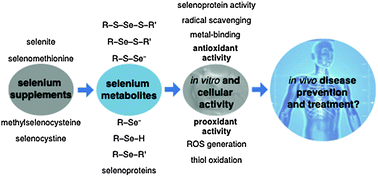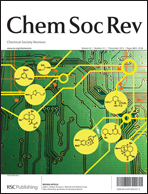Which form is that? The importance of selenium speciation and metabolism in the prevention and treatment of disease
Abstract
The biological activity of selenium is dependent upon its speciation. We aim to integrate selenium speciation and metabolism into a discussion of the mechanisms by which selenium exerts its biological activity. First, we present the current status of selenium in the prevention of cancer, cardiovascular and neurodegenerative diseases with particular attention paid to the results of major chemoprevention trials involving selenium supplementation. A comprehensive review of the current understanding of the metabolism of common dietary selenium compounds – selenite, selenomethionine, methylselenocysteine and selenocystine – is presented, with discussion of the evidence for the various metabolic pathways and their products. The antioxidant, prooxidant and other mechanisms of the dietary selenium compounds have been linked to their disease prevention and treatment properties. The evidence for these various mechanisms – in vitro, in cells and in vivo – is evaluated with emphasis on the selenium metabolites involved. We conclude that dietary selenium compounds should be considered prodrugs, whose biological activity will depend on the activity of the various metabolic pathways in, and the redox status of, cells and tissues. These factors should be considered in future laboratory research and in selecting selenium compounds for trials of disease prevention and treatment by selenium supplementation.


 Please wait while we load your content...
Please wait while we load your content...